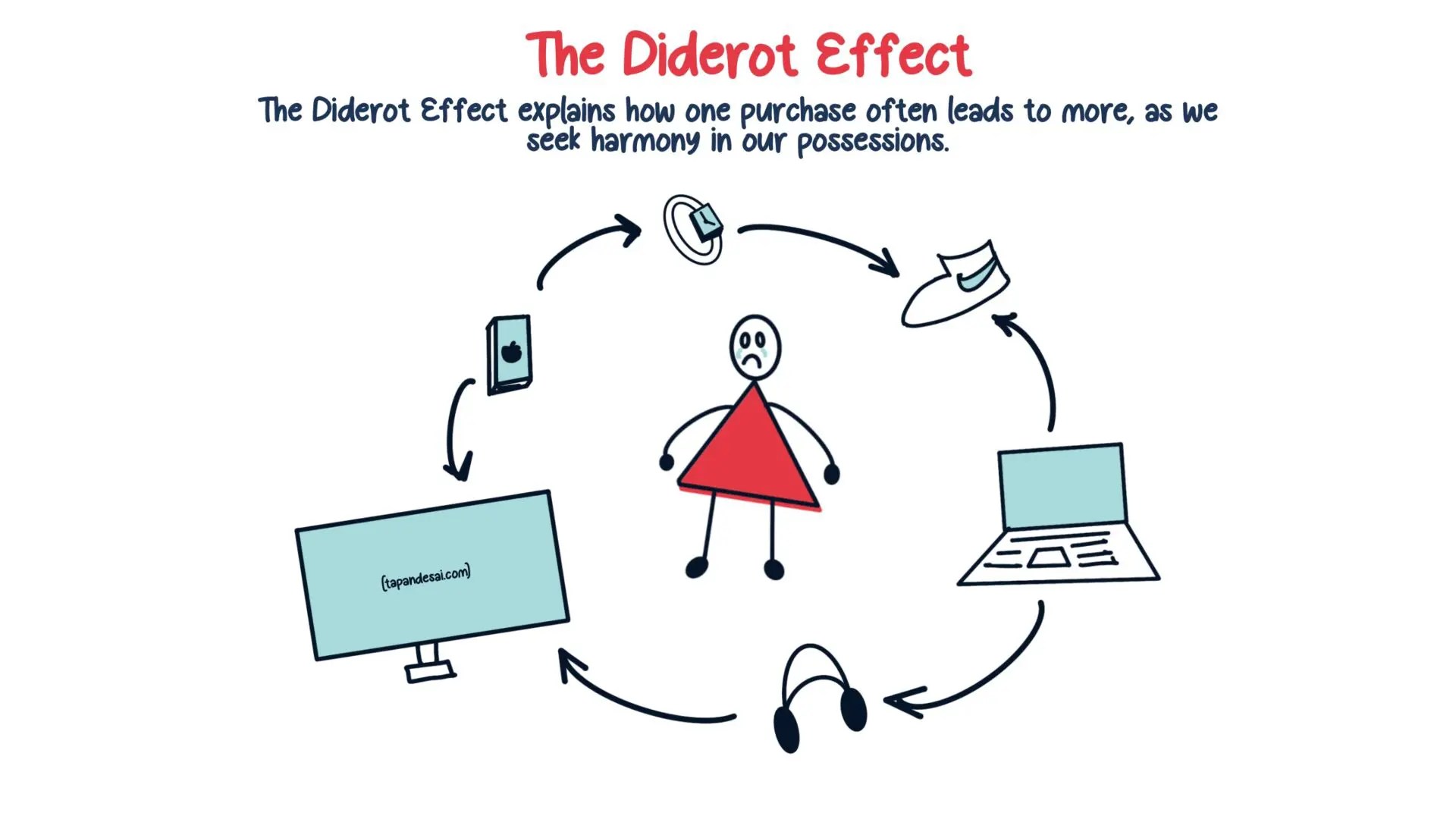Understanding The Cycle Of Consumption

The Diderot Effect, a fascinating phenomenon of human behavior, shines a light on the way we perceive and interact with our possessions. It explains how acquiring a new item can lead to a cascade of additional purchases, transforming our lifestyles and self-perception in the process. This concept, rooted in the life of the French philosopher Denis Diderot, reveals the intricate relationship between our identities and the material world around us. As we delve into this effect, we will explore how it influences our choices, whether consciously or subconsciously, and how it can impact our financial well-being and personal satisfaction. Understanding the Diderot Effect can empower us to make more intentional choices about our consumption habits and the way we curate our environments.
The essence of the Diderot Effect lies in its demonstration of how a single new acquisition can disrupt the equilibrium of our existing possessions. When we bring something new into our lives, we often feel compelled to upgrade or replace other items to maintain a cohesive aesthetic or lifestyle. This ripple effect can lead to overspending and a cycle of dissatisfaction, as we continually seek to align our possessions with an idealized version of ourselves. In this article, we will dissect the Diderot Effect, its origins, and its implications on our lives.
In a world increasingly driven by consumerism, understanding the Diderot Effect becomes crucial. It encourages us to reflect on our motivations for acquiring new things and to consider whether they genuinely contribute to our happiness or merely serve as temporary distractions. By recognizing this psychological pattern, we can reclaim control over our consumption, leading to a more fulfilling and meaningful existence.
What is the Origin of the Diderot Effect?
To fully grasp the Diderot Effect, we must first look back at its namesake, Denis Diderot. Diderot was an influential figure of the Enlightenment, known for his contributions to philosophy, literature, and the arts. In 1765, he received a lavish gift from a friend—a beautiful scarlet robe. This new acquisition sparked a chain reaction that would come to define the Diderot Effect.
How Did Diderot's Robe Change His Life?
After acquiring the scarlet robe, Diderot became increasingly dissatisfied with his modest surroundings. He felt that the robe did not align with the rest of his possessions, which seemed dull and uninspiring in comparison. This dissatisfaction led him to replace various items in his home, including his furniture and decor, to create a more harmonious environment that matched the elegance of the robe. Ultimately, Diderot's quest for aesthetic coherence spiraled into a complete overhaul of his living space, illustrating how a single purchase can lead to an avalanche of additional spending.
What Are the Implications of the Diderot Effect?
The Diderot Effect has profound implications for our understanding of consumer behavior. It emphasizes the psychological connection we form with our possessions and how they influence our self-identity. Here are a few key implications:
- Increased consumption can lead to financial strain.
- Seeking cohesion in our possessions may result in dissatisfaction and the desire for more.
- Understanding this effect can help us make more mindful purchasing decisions.
- Awareness of the Diderot Effect can encourage a more minimalist lifestyle.
How Can We Avoid the Diderot Effect?
Recognizing the Diderot Effect is the first step toward mitigating its impact on our lives. Here are some strategies to avoid falling into the cycle of compulsive consumption:
What Role Does Social Media Play in the Diderot Effect?
In today's digital age, social media has amplified the Diderot Effect, as individuals often showcase their lives through curated images. The constant exposure to aspirational lifestyles can lead to feelings of inadequacy and the desire to keep up with others. This can result in a cycle of consumption that is both excessive and unsustainable. By fostering a culture of comparison, social media can exacerbate the Diderot Effect, pushing individuals to make impulsive purchases in an attempt to achieve a perceived ideal.
Is the Diderot Effect Linked to Personal Identity?
The Diderot Effect is intricately linked to personal identity. Our possessions serve as extensions of ourselves, often reflecting our values, beliefs, and aspirations. As we acquire new items, we may feel the need to redefine or enhance our identities, leading to a constant cycle of consumption. This desire for alignment can create a sense of pressure to maintain a certain image, further perpetuating the Diderot Effect.
How Can Understanding the Diderot Effect Lead to Better Choices?
By understanding the Diderot Effect, individuals can make more intentional decisions regarding their consumption habits. Awareness of this phenomenon allows for greater self-reflection and encourages individuals to consider the true motivations behind their purchases. By prioritizing meaningful acquisitions and cultivating a sense of gratitude for what one already possesses, it is possible to break free from the cycle of compulsive consumption.
Conclusion: Embracing a Conscious Lifestyle
In conclusion, the Diderot Effect serves as a powerful reminder of the intricate relationship between our possessions and our identities. By acknowledging this phenomenon, we can take proactive steps to cultivate a more satisfying and intentional lifestyle. Embracing mindfulness in our consumption habits, prioritizing quality over quantity, and reflecting on our values can lead to a more fulfilling existence, free from the constraints of materialism. Understanding the Diderot Effect empowers us to reclaim our agency over our choices, allowing us to curate a life that truly resonates with who we are.
You Also Like
Discovering The Wonders Of Oil From Sesame SeedsUnveiling The Romance: Who Is Angel Reese Dating?
Billy Bookcase IKEA: A Timeless Storage Solution
Maui Babe: The Tropical Vibe Of Paradise
Enchanted Flavors: The Role Of Turkish Delight In The Chronicles Of Narnia
Article Recommendations
ncG1vNJzZmiZlKK2r3rBqKmdnaKhrq%2Bw0mespGaTpLpwwNGynJygn2p8pbXDnqmorF2as6exwq1loaydoQ%3D%3D